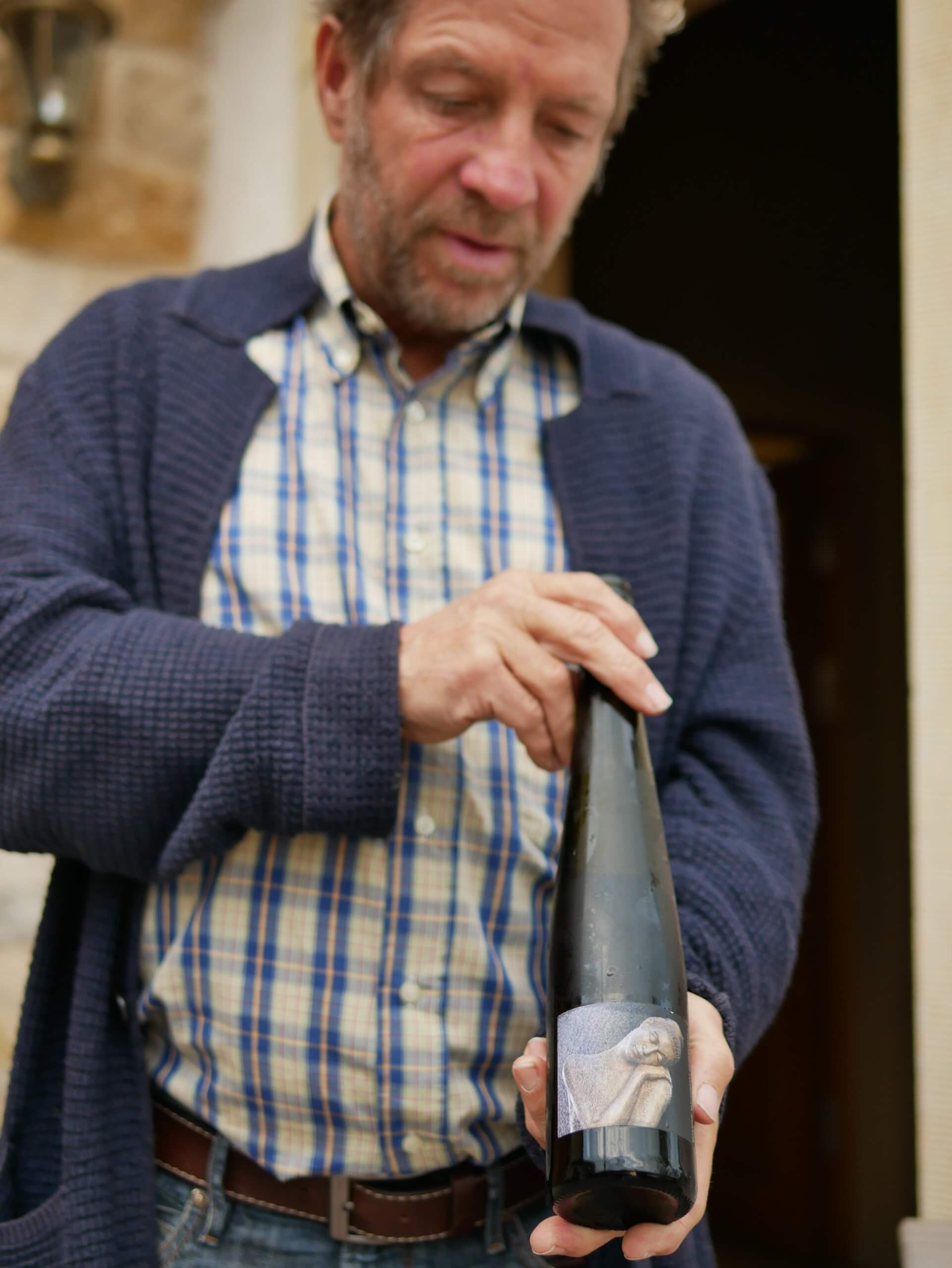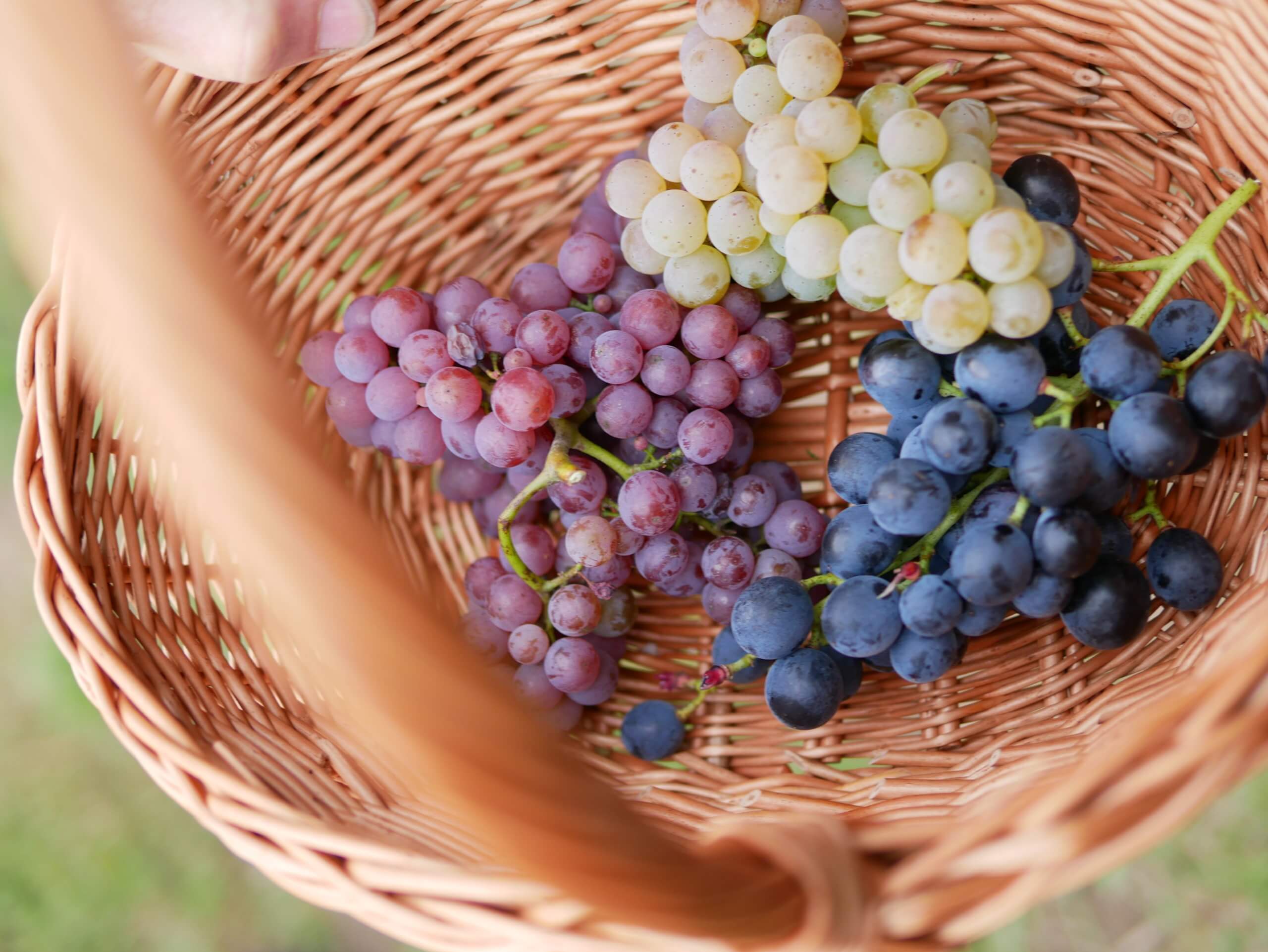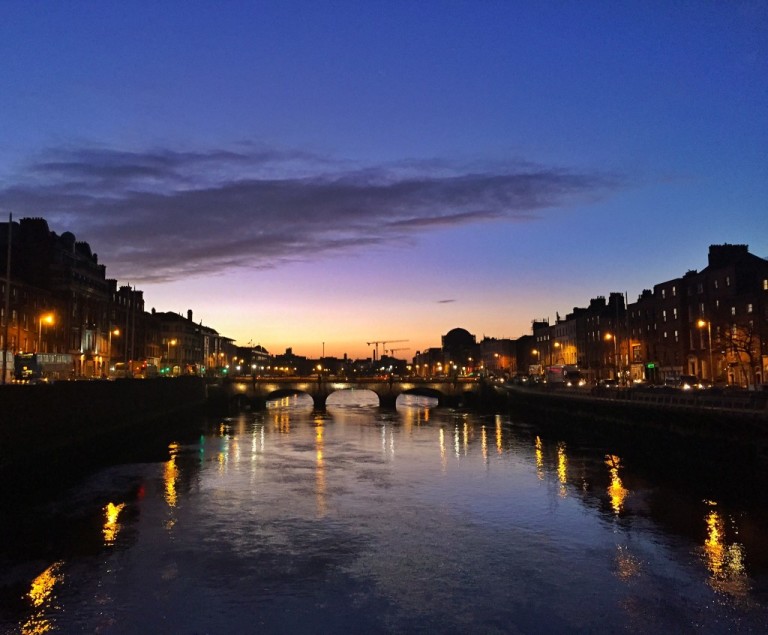Saxon Wine Route: A guide to Germany’s smallest wine region
Last Autumn I spent one magical week wondering through historic towns by the Elbe. Wondering through vineyards. Visiting local wineries to taste their latest vintages. Sampling fine food along with the wine. Plus, I stumbled upon a few fairytale castles. For me, nothing sums up the beauty and romance of Saxony better than the stunning Saxon Wine Route. Winding its way for almost 60 km along the Elbe River, the Saxon Wine Route is the perfect way to discover Germany’s smallest wine growing region. After the barren years of communism, wine making in the region has made a comeback in the post reunification era, thanks to the joint collective efforts of independent winemakers in the region. It is a beautiful route that promises a fantastic mix of beautiful vineyards, cosy traditional wine cellars, historic towns, sophisticated architecture along the river Elbe, between the starting point which is in Pirna and the end in Diesbar-Seußlitz. There are a number of ways to discover the route, depending on the time of the year and how much time you have on hand. You can tackle the route through individual legs, circular walks, or go for the whole distance. Following my earlier story, I’ve put together a guide to the Saxon Wine Route, covering some of the wineries and towns you can visit along the route, list of things to do in the Saxon Wine Route plus also tips on where to stay along the route. This is by no means a comprehensive guide to the Saxon Wine Route but will give you a good flavour of what to expect.

Planning for the Saxon Wine Route
A. What to expect
Ideally you should dedicate at least a week to see the Saxon Wine Route.
There are different possibilities in doing so: by public transport, bicycle, car and even by foot…..You can tackle the trail in six separate stages, each 15 to 18 kilometres in length and taking between five and six hours to walk. The Saxon Wine Route is clearly signposted throughout. Just keep an eye out for the logo and marking sign of the Saxon Wine Route which is a red grape with a red S above it. The route is very scenic and will take through the best of what Saxony has to offer – from beautiful vineyards and baroque castles to historical town centres and steep staircases leading to spectacular vantage points. The trail includes asphalt sections, cobblestone as well as overgrown paths and stairs. Bring a good pair of hiking shoes with you. Another alternative way to see the trail is by cycling the 55 km route (signposted as the ‘Elbe Cycling Route’). If you are pressed for time, you can also cover the route on the nostalgic old paddleboat steamers of the Sächsische Dampfschiffahrt.

B. When is the best time to visit the Saxon Wine Route
The best times to visit the vineyards are from late April into the summer and then, depending on weather conditions, immediately after the harvest in late autumn. Wherever you go there are hundreds of Wein -or Winzerfests like the Radebeul Autumn and Wine Festival where you have the perfect opportunity to taste the wines, mix with people, and enjoy local tasty treats.
C. Getting there
The best way to visit here is via the new Berlin Brandenburg Airport which is accessible by a direct train ride ( 1 hour and 40 minutes Price: Starts from €22 one way). There are also excellent train connections from Frankfurt ( 4 hours 19 minutes , €50 . Worth mentioning that there is an excellent air link from Frankfurt to Dresden via Lufthansa with a journey time of just 55 minutes )and also Munich to Dresden ( 4 hours 45 minutes, €60 one way )
The other option is for people to fly into Prague airport and there is a direct train to Dresden (2 hours 26 minutes, €17.90 one way).
Towns to visit on the Saxon Wine Route

Pirna
A short hop from Dresden, Pirna is the starting point for the Saxon Wine Trail and also the gateway to the stunning Saxon Switzerland National Park. It is a city that goes a bit under the radar for many tourists which is a shame – spared of any damage from the Second World War, its well preserved historical old town with its picture perfect Renaissance town square is arguably the prettiest in Saxony. Crowned by the towering Sonnenstein Castle, its winding streets lined with charming courtyards and numerous fountains are a joy to explore.

Pillnitz
Located in the south east suburbs of Dresden, the village of Pillnitz sums up the beauty of the Saxon Wine Trail in a nutshell, with its perfect amalgamation of dreamy Elbe riverscapes, rolling vineyards with spectacular vistas of the distant Saxon Switzerland and a gorgeous Baroque palace. Inspired by the architecture of the far east, Pillnitz Palace and Park was a pleasure palace and later the summer residence of Saxony’s most famous ruler Augustus the Strong. Highlights here include exploring the 28 hectare gardens which is home to a number of rare trees, particularly in the Dutch Garden and Conifer Garden. Learn about the rich history of life at the court in the Schlossmuseum. Design lovers will love the Kunstgewerbemuseum collection, which ranges from late antiquity to contemporary design with a special focus on Saxon handicrafts.

Dresden
As the train pulls itself over the Elbe, the first thing that hits you when you arrive is the stunning Baroque silhouette of Dresden’s Altstadt. Combining the old and the new, the charm of Dresden lies in its unpredictability, a kind of Dr Jekyll and Mr Hyde personality where you are always having to reconcile two very different images of the city. In the Neustadt new town you will find a gritty and alternative side that expresses itself through its world famous street art scene, which is complemented by a strong nightlife scene that matches Berlin in some aspects. You will discover a fantastic live music scene, a wide range of cultural events and also a fantastic range of international dining options. Hop across the Elbe and then you find yourself in the very grand old town, with its beautifully restored Renaissance and Baroque architecture, bustling outdoor cafes and restaurants, life here has a very different feel and pace. Whichever type of traveller you are, you are bound to find something to suit your interests in this city.

Radebeul
Radebeul is a dreamy little town right next to Dresden. It has this lovely relaxed laid back vibe, thanks to the impressive hillside vineyard landscape edging up from the Elbe. Apart from the numerous wineries there are lots of artist workshops, galleries and cute boutique shops to explore here. You also have one of the oldest narrow-gauge railway lines in Germany, where nostalgia evoking steam trains chug their way to neighbouring Radeberg.
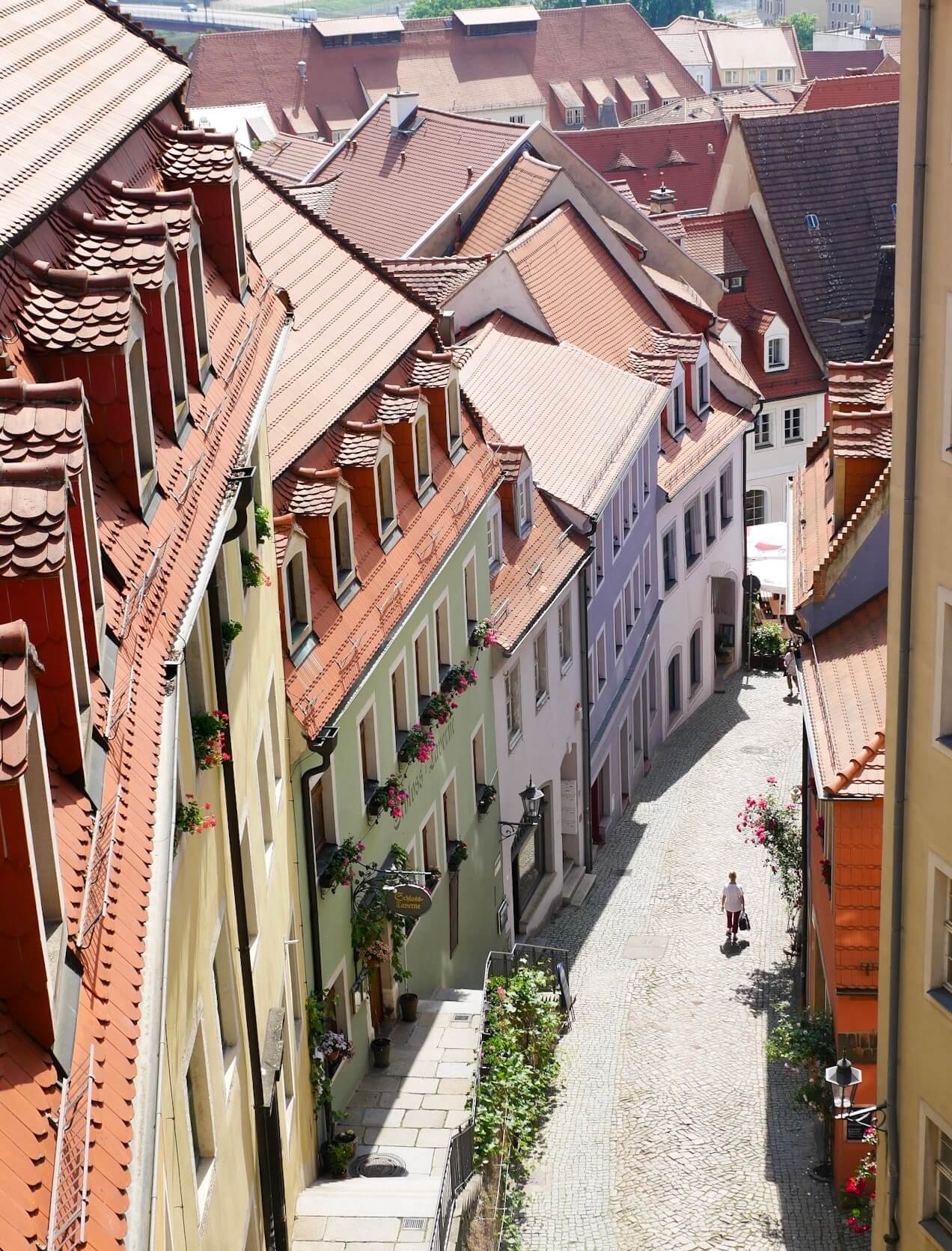
Meissen
Meissen is often overshadowed by its more glamorous neighbours – Dresden and Leipzig but is well worth the detour. Bordered by sloping vineyards that produce dry and fruity white wines and dominated by its impressive cathedral hill with its stunning Gothic cathedral and Albrechtsburg Castle, Meissen is one of the best-preserved towns you will discover on the Saxon Wine Route. I would use the German word “Gemütlichkeit” to describe Meissen – you have a feeling of instant zen, cosiness walking the cobbled hilly lanes streets of this 1,000-year-old city. Meissen is also the oldest manufacturer of porcelain in Europe and porcelain aka ‘white gold’ played a huge role in the city’s history-Porcelain museum is unmissable. For more about Meissen, checkout my earlier guide to the porcelain city of Germany.

Diesbar-Seusslitz
At the bend of the Elbe River, you will find the village of Diesbar-Seußlitz which marks the end of the Saxon Wine Route. The wineries found in this little piece of heaven are just grand, as is the Baroque Castle Seußlitz. One of the most popular festivals is the annual Marriage Market, which has been celebrated for the last 500 years.
Wineries to visit on the Saxon Wine Route

Schloss Wackerbarth
Address: Wackerbarthstraße 1, 01445 Radebeul, Germany
Schloss Wackerbarth, the region’s largest and most famous vineyard, is one of the places where you can sample the special aroma of the Goldriesling variety that was introduced to Saxony from the Alsace in 1913. Wackerbarth, sitting above the Elbe in Radebeul not far from Dresden, is a quite splendid combination of vineyards, Baroque gardens, a palace and a modern wine/sparkling wine factory. In other words, don’t miss!
‘Exquisitely Saxon’ is the motto of Schloss Wackerbarth but can be applied to most vineyards here. One of the distinguishing characteristics of vineyards at Schloss Wackerbarth are their centuries old steep vineyards bounded by dry stone walls. Maintaining these stone walls, some hundreds of years old, is an expensive setup that demands a great deal of manual care. Working the vines, on these steep terraces is a real labour of love, a lot more exhausting than simply driving a tractor through a flat field of vines. The end result is pretty special. The grapes are handpicked. The vines deliver incredibly mineral, intense flavoured grapes. Also, the grapes here achieve a surprising ripeness, odd, considering their northern latitude. When you consider the small quantities in which these wines are produced and their local popularity, finding them outside of Germany, or even outside of Saxony for that fact is quite difficult. What you sample here is unique. That’s what makes any trip along the Saxon Wine Route, a very special experience.
Hoflößnitz winery
Address: Knohllweg 37, 01445 Radebeul, Germany
Hoflößnitz winery in Radebeul is the cradle of Saxon viticulture and represents a 600 year-old proud history of wine culture on the slopes of Loessnitz. It is the first winery in Saxony which is certified for producing ecological wine.
The winery dates back to 1401 when Wettin Margrave Wilhelm I acquired the village of Kotchenbroda in with all its fields, meadows and vineyards. Besides guided tours through the historic vineyards, visitors can visit the Saxon Wine Route Visitor centre, where you can plan your trip along the wine route. The winery also offers onsite accommodation with four double rooms and two apartments. Last, but most importantly at the end, whilst enjoying the view of the beautiful vineyards, you can sample a delightful glass of Hoflößnitz wine at their delightful onsite Weinstube. I recommend the Kerner wine-with hints of star fruit, passion fruit and grapefruit. This is summer in a glass.
Weingut Klaus Zimmerling
Address: Bergweg 27, 01326 Dresden, Germany
High above the picture postcard village of Pillnitz at the foot of the Rysselkuppe, the Pillnitz Royal Vineyard, lies another star of the wine route, the Zimmerling Winery, run by Klaus Zimmerling and his artist wife Malgorzata Chodakowska, who also designs the labels for the wine bottles. The wine is much sought after in Germany and beyond which have been served in Michelin star restaurants like Noma in Denmark. Zimmerling only produces around 14,000 bottles a year. Zimmerling winery specializes in white wines, especially Riesling, Grauburgunder, Weißburgunder, Kerner, Gewürztraminer and Traminer.
A unique blend of art, wine and sculpltures, this is a special place to visit. Both Klaus and Malgorzata are happy to receive visitors from Dresden and around the world. Visit their wine shop, chat with Klaus and his wife about their wines. In the middle of the vines, you can visit Malgorzata Chodakowska’s studio and view her subtle ethereal sculptures, graceful female figures which she creates from wood or bronze. They are currently building a beautiful new events space that will house some of Malgorzata’s sculptures and will be available for weddings and private hire.
Weingut Schuh
Address: Zaschendorfer Str. 2, 01640 Coswig, Germany
The Schuh Winery is run by Katharina and Matthias, who were born into a family of wine growers and who have been running their father’s winery since 2016 with great passion and love for wine.
Their favourite place is the steep sloping vineyards of Sörnewitz in the region around Meissen and Dresden, where they grow wine “with character and soul”. They refrain from using any herbicides and only use organic fertilisers. As connoisseurs of professional paths, their culinary demands go far beyond the edge of the wine glass, which is why a visit to the estate’s own wine restaurant is worthwhile. Special events such as herb-wine hikes take place regularly at the winery. Along with the grape varieties conventionally grown in Saxony, the Weingut Schuh winery is the only establishment to press a rich, genuine red wine made from Dunkelfelder grapes.
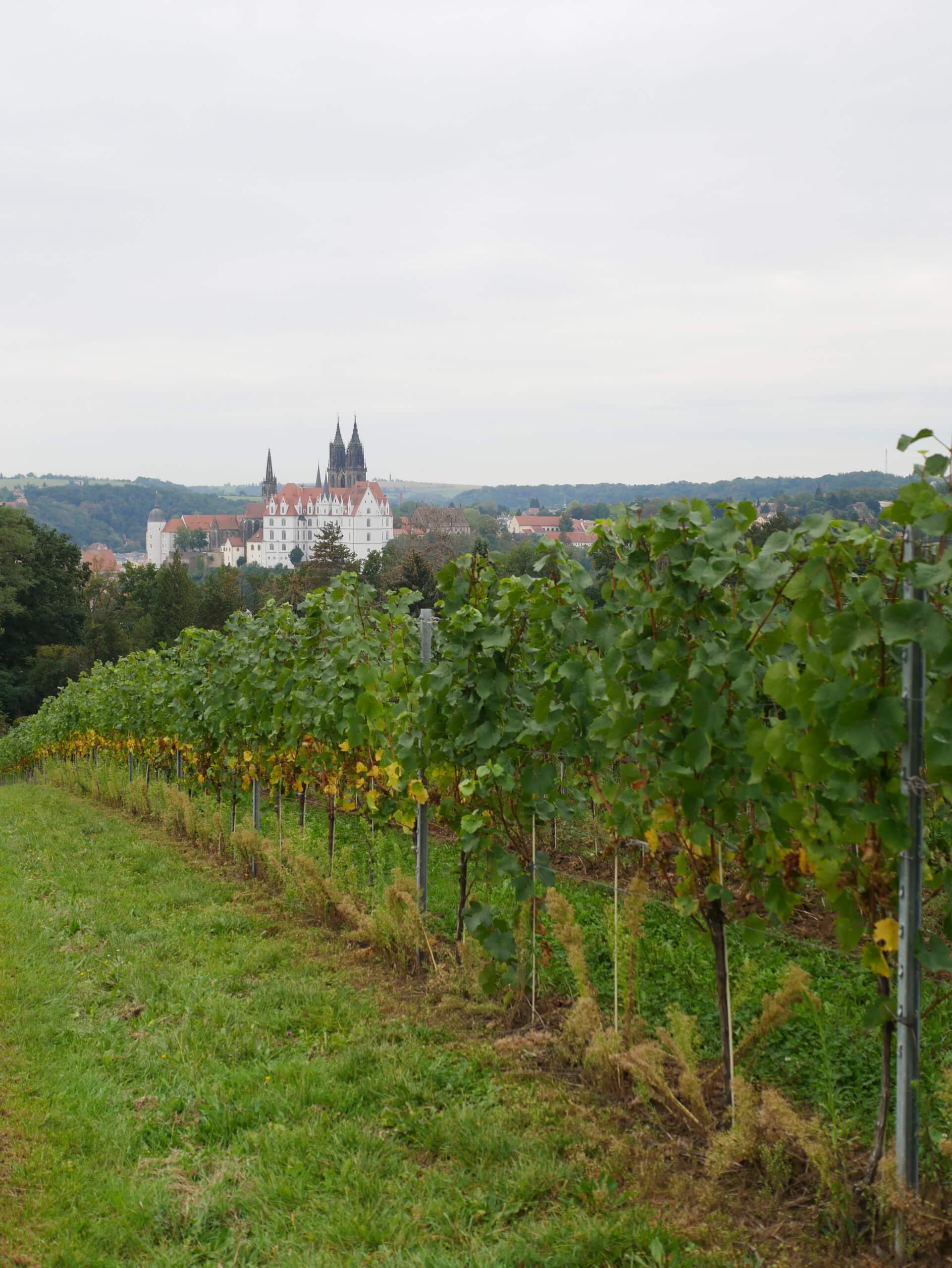
Winery Proschwitz Castle
Address: Dorfanger 19, 01665 Diera-Zehren, Germany
Proschwitz is a village close to Meissen and Proschwitz Castle enjoys a reputation of being the oldest private winery in Saxony. The Castle, built in the Neo-Baroque style is owned by Georg Prinz zur Lippe and today the winery enjoys status as one of the finest producers of German wine. The extended hours of sunshine enjoyed in the Elbe valley along with the wealth of minerals in the soil help produce some of the most unique wines of this region. Given its fine interiors, the castle also hosts private events and weddings.
Winery WeinReich Diesbar-Seußlitz
Address: An der Weinstrasse 7 01612 Diesbar-Seußlitz, Germany
In the 800 years old small wine village Diesbar-Seußlitz, marking the end of the Saxon Wine Route, you will find the last winery on the Saxon Wine Route, the Winery WeinReich Diesbar-Seußlitz. Located in the former stable of the manor of Seußlitz Castle, during the season visitors can lounge on their dreamy sandstone terrace and enjoy a bunch of rarities from Saxony plus a selection of wines from Germany’s other wine regions. Matching dishes are included. Note that their small wine tavern is open only on Sundays from 1 p.m. to 6 p.m. Check their website for the latest opening hours.
Winzer Winn
Address: Grüner Weg 44, 01796 Pirna, Germany
This boutique small winery run by the passionate Wolfgang Winn is a great introduction to Saxon Wine Route. Carrying on a 300 year old tradition of winemaking that dates back to when Augustus the Strong started with his Blauburgunder wines, hobby winemaker Wolfgang Winn has been pressing wines from the Pillnitz Royal Vineyard on the southern slope of the Borsberg and from the Schlossblick vineyard in Pirna. Winn grows a wide variety of grapes that are popular here on the Elbe including Müller-Thurgau, Goldriesling, Pinot Blanc, Ruländer, Traminer, Morio Muskat, Scheurebe, Pinot Noir and Dornfelder.
In season, you can wonder through the royal vineyards in Pillnitz or soak in the sun on their sun terrace and chat to Wolfgang Winn at his historic vineyard cottage on the Leitenweg overlooking the Elbe valley.
Where to stay on the Saxon Wine Route
Hotel Goldener Anker, Radebeul
Within walking distance from the River Elbe you find the quaint, traditional Hotel Goldener Anker in Radebeul. Located close to the Radebeul Boat Jetty and in the vicinity of small eateries and shops, the rooms feature a historical design and include amenities like satellite TV and attached bathrooms. Some of the rooms overlook the Elbe. Breakfast can be enjoyed at extra cost and Saxon style food is served at the hotel’s excellent restaurant. There’s also a large beer garden on the premises. Room rates start from €80.
Vinotel. Weingut Schuh, Sörnewitz
During the season (1st April till 31st October), Vinotel Weingut Schuh offers visitors the possibility of spending the night in the winery in their beautiful half-timbered house where you can choose from single and double rooms or your very own country house style apartment. Rooms are cozy here. Guests can relax on their sun terrace, enjoy a meal in their fantastic restaurant plus wake up to a hearty Saxon style buffet breakfast which includes of course unlimited Sekt. Rates start from €75 for doubles, with breakfast.
Felix im Lebendigen Haus, Dresden
Your home away from home in Dresden, located in the heart of the city overlooking the stunning Zwinger is the Felix im Lebendigen Haus. A design hotel with all the state of the art facilities and superior design, choose from a range of suites. Some suites have features like a kitchenette, stylish bathroom, free Wi-Fi, flat screen TV, a desk to work and a safe to secure all valuables. Long stay rates start from the €62 for a small suite.
Schlosshotel Pillnitz
Vineyards and bountiful orchards surround this hotel located on the grounds of the historic Schloss Pillnitz Palace. On the banks of the River Elbe, you will find it hard to find a more historic and tranquil spot to stay the night. The summer months provide the opportunity of enjoying a meal at the beer garden. The rooms are spacious and provide lots of luxuries – canopied beds, lush draperies, scenic views and wonderful dining opportunities will make this a stay to remember.
Things to do on the Saxon Wine Route

Saxon Viticulture Museum
At the heart of the winery is the historic Lust- und Berghaus, built for Saxon Elector Johann Georg I in 1650 which now houses the Saxon Viticulture Museum. You can dig into the centuries-old rich history of wine making, the work of the winemakers of past centuries and their equipment. You’ll find maps, models and works of art that illustrate the peculiarities of viticulture in the Elbe valley. Other notable reasons to visit is to see Albert Eyckhout’s (a court painter from the Netherlands) lavish ceiling frescoes in the castle’s banquet hall, a masterpiece of art that features 80 Brazilian birds.
Proschwitz Castle
Proschwitz is a village close to Meissen and Proschwitz Castle enjoys a reputation of being the oldest private winery in Saxony. The Castle, built in the Neo-Baroque style, is owned by Georg Prinz zur Lippe and today the winery enjoys status as one of the finest producers of German wine. The extended hours of sunshine enjoyed in the Elbe valley along with the wealth of minerals in the soil help produce some of the most unique wines of this region. Given its fine interiors, the castle also hosts private events and weddings.

Moritzburg Castle
Moritzburg Castle is a historical Baroque palace found in Moritzburg near Dresden. It enjoys a superb location, perched on an artificial island, surrounded by water and near to extensive castle grounds, historically used for Royal hunting expeditions. The interiors of the castle are opulently designed. Many of the rooms are devoted to showing the spoils of hunting expeditions. There are areas of the house displaying beautiful porcelain from Japan, China and closer to home – Meissen. Lacquered furniture ornately decorated with silver, large paintings and leather wallpaper are all details to take in when touring the Moritzburg Castle.
Tip: To reach Moritzburg Castle hop on the Regionalbus 326 from Dresden-Neustadt. Invest in a VVO one day ticket which covers the whole area. It costs €13.50 for the day and two children (aged 6-14) can travel free with an adult. The other option if you are travelling in a group is to buy the group pass which costs €28.

Lössnitzgrundbahn narrow-gauge railway
If steam trains and time travelling is your thing, then a journey on the Lössnitzgrundbahn narrow-gauge railway is a wonderful experience that will delight people of all ages. One of the oldest narrow-gauge railway lines in Germany, without fail, this classic steam train embarks every day on a 16.6 kilometre route from Radebeul Ost to Radeburg via Moritzburg. Tickets cost €7.50 one way ( Kids: €3.80) or €14.30 (Kids: €7.20) return.
Dresden- Hop-on Hop-Off Bus Experience
Who doesn’t enjoy a Hop-on Hop-off bus experience to leisurely tour and discover a city at your own pace? The Dresden bus takes in as many as 22 stops and you can hop on at the Zwinger right in the heart of the city or any one of the remaining stops. To circumnavigate the entire trail without hopping off takes 2 hours and you have the pleasurable accompaniment of an audio guide in the language of your choice. There is a live guide who will take you around sights like the Zwinger, Frauenkirche and Fuerstenzug. Adults ride for €20 and a child for free with an accompanying adult. More details can be found on their website.

Albrechtsburg Castle Meissen
Another castle on the Saxon Wine Route is Albrechtsburg Castle Meissen. Built in Gothic and Renaissance style it is perched on a rocky plateau, overlooking the River Elbe and located right next to Gothic Meissen Cathedral. Highlights of the design include the Great Staircase Tower, banqueting halls, the former electoral presence room and independent apartments for living. It is Germany’s first living castle and home of the first European Porcelain Manufactory which is now on the outskirts of Meissen. Meissen itself is the oldest town of Saxony and a romantic jewel with narrow lanes and beautiful historic houses.

Pfunds Molkerei (Pfunds Dairy), Dresden
Slated to be the ‘World’s Most Beautiful Milk Shop’ by the Guiness Book of World Records, Pfund’s Molkerei has been doing business as a milk shop in Dresden since 1880. This beautiful dairy was thankfully not hit during WW2 and is today a beautiful testament of all that is beautiful and ornate with regard to interiors. Lavishly decorated with hand painted Villeroy and Boch tiles, the dairy is as pretty as a picture in shades of blue and gold. Resembling a palace more than a traditional dairy, sipping on a glass of milk or tasting cheeses from Saxony and all over the world has never seemed so luxurious!

Sächsische Dampfschiffahrt
With a fleet of nine historic paddle steamers, between 81 and 131 years old, the Sächsische Dampfschiffahrt operates the largest and oldest fleet of historic paddle steamers in the world. A ride on the classic paddleboat steamer gives you a fantastic perspective of the vineyards along the wine route. The vessels have been lovingly restored and feature cozy salons both on the main deck and below deck. While on the vessel, guests can get an open view of the original, oscillating steam engine plus there’s also small windows on the side to view the splashing paddle wheels. Journey time is about 2 1/2 hours. Grab a glass of wine from the vessel bar and enjoy the spectacular scenery along the sleepy Elbe river.
They offer all kinds of ride from a city tour (1 h) to a trip into Saxon Switzerland (6 hours just the rides)
Important dates

August: Open Vineyards Weekend
The Open Vineyards Weekend held in August each year is immensely popular with the locals. A long-standing favourite with the locals for a reason: every year, vineyards between Pillnitz and Diesbar-Seusslitz, in Dresden and the small town of Freital just a few miles south, open their doors to visitors who can explore the wine terraces and winemaking on guided tours, before sampling the products. A great way to get to know what makes the Saxon Wine Route so special.
September: Federweisser Fest in Diesbar-Seußlitz
Picturesque Diesbar-Seußlitz in the Dresden Elbland region is the Northern gateway to the Saxon Wine Route. Early autumn is the time for Federweisser, the sweet and low-alcohol wine made of grapes that ripen early, and Diesbar-Seußlitz has quite rightly dedicated a whole wine festival to it. There’s music, guided tours of the surrounding vineyards and lots of delicious savoury snacks that go particularly well with this wine. Don’t be put off by its cloudy look that is down to the yeast that is added to the grapes and its sweetness – it is actually rather refreshing, with a pleasant sparkle. Tip: Take a look at the local Baroque palace and its lovely gardens.
September: Wine Festival in Meissen
Walks in Meissen’s vineyards are a delight in autumn but there is another reason why you should make it here in late September: The town’s Wine Festival is the biggest fair of the Elbland region with all the major Saxon vineyards showcasing their wines. For three days, Meissen’s beautiful old town is all about wine, music and food. Not to be missed: the residents open their courtyards and vaulted cellars to visitors, turning private homes into very charming vine taverns.
Radebeul Autumn and Wine Festival
There are a bunch of independent wineries in Radebeul which form the bedrock of one of Saxony’s most popular festivals, the Radebeul Autumn and Wine Festival. Celebrated annually at the end of September to mark the onset of Autumn, the festival besides marking the initial wine harvest, also takes place in parallel with the Internationales Wandertheater Festival (International Itinerant Theatre Festival). You have an intoxicating combination of locals chugging down the sweet young Federweisser wine and at the same time art, clowns, musicians and actors turning the cobbled streets into a stage. With all the wineries of the Saxon Wine Route showcasing their wines, it is the perfect introduction to the Saxon Wine Route.
Further reading
If you spending some time in the area you may want to checkout my guide to free things to do in Berlin, travel guide to Dresden, best things to do in Görlitz, travel guide to Bautzen, how to spend 48 hours in the porcelain city of Meissen,
Disclaimer
Please note that alongside Sabrina, I was invited to Saxony to write and create a video about the Saxony Wine Route. All the opinions expressed in this piece are entirely my own. I had planned to do this trip so I was really grateful for this trip and opportunity, especially give the year we had with little or no work. So I’d like to say a huge thank you to Dorothea, Nadine, Wolfgang and the TMGS team for inviting us back to Saxony and sharing their beautiful region with us. We hope to return soon!

